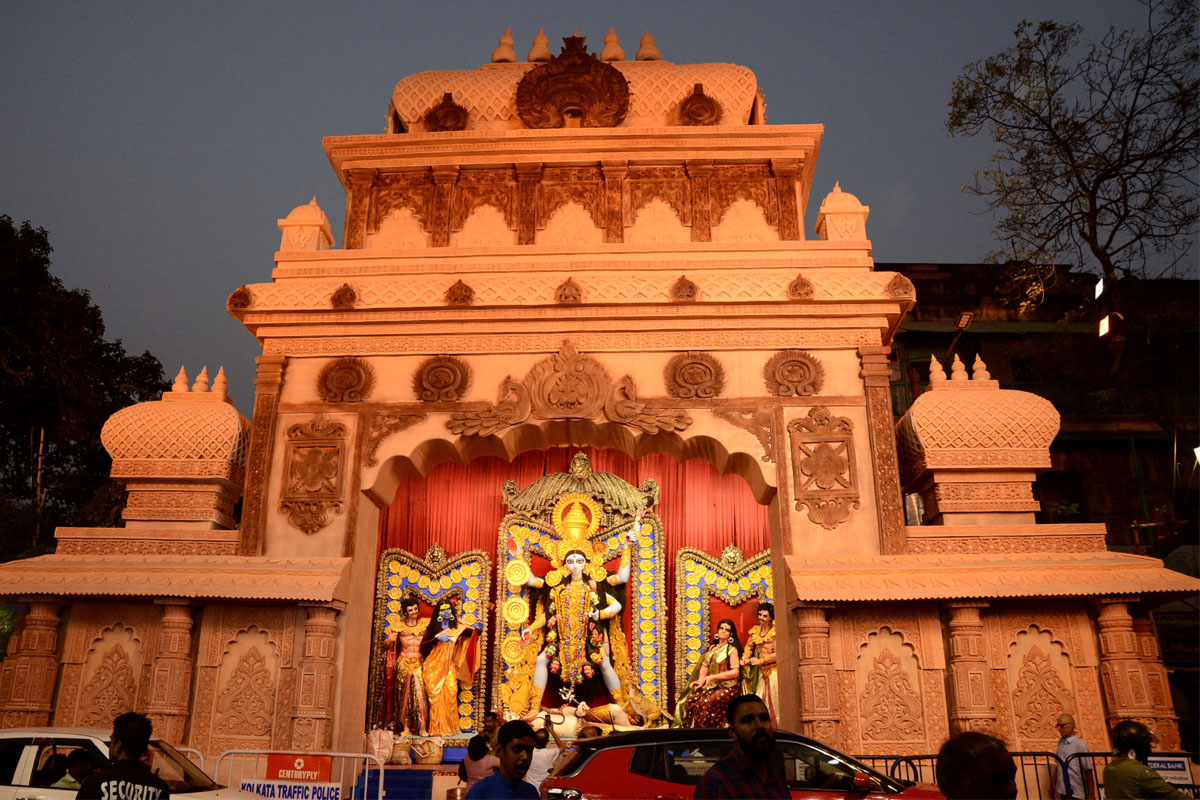The city of joy Kolkata has quite a few famous Kali temples, which are thronged by the devotees on Kali Puja night. Dakshineswar temple on the banks of the Ganges is famous because of its head priest, famous Kali devotee Ramkrishna Paramhans.
The temple started in 1855, on 31 May. The land for the temple was purchased in 1847 and construction started then on. Another temple, Firingi Kalibari on BB Ganguly St is said to be more than 200 years old and got its name because of its association with Kali devotee Antony Firingee.
Advertisement
Of course, the Kali temple at Kalighat is one of the most famous one, frequented by many.
Another temple of the deity in south Kolkata, Lake Kalibari on Southern Avenue attracts thousands of devotees. The temple started in 1949, was founded by Haripada Chakraborty, better known as Guruji, on whom the park opposite the temple is also named. A new structure on the Kalibari campus is coming up spread over 10 acres.
The structure is coming up just behind the main structure, where the goddess is presently placed.
“This new structure was started in 2002 but due to lack of funds it is taking time to complete,” said the main shebayet of the temple.
Nitai Chandra Basu, the main sebayet, added, “There was no structure then. My gurudev got the cooperation of the people, who requested him to build a temple here. Thus mother Kali was established at the temple and it stands today. We are now building a bigger temple at the back of the present one and we plan to shift the deity there once it is over. Gurudev passed away in 1987. But before passing away, out of his innumerable disciples, Gurudev ultimately picked Sri Nitai Chandra Basu as his competent torchbearer and trained him for the advancement of his Karmayagya. Thus yesterday’s Karmayagya has been transformed into a present day Dharmayagya: A vast project for the construction of a ‘temple complex’. Mr Basu said that over the years, the temple has started worshiping goddess Durga, goddess Bagala, goddess Dhumavati and goddess Santoshi.
“Space is a constraint and the devotees have to keep moving. That is the reason why we had to shift the Durga Puja to the ground opposite the temple. At a Durga temple, you can worship other deities and gods, in a Kali temple you cannot. Our chief minister Mamata Banerjee had initiated all the three deities at the temple. On the advice of the priests, we also started our Durga Puja at the temple,” said, Mr Basu, an engineer, who retired as chief mechanical engineer with transport department.
The temple does not use Ganga jal (water from the Ganges for the rituals). Mostly the temple uses water from the lake for the puja.
Dakshineswar Kali temple in Dakshineshwar gained prominence in the late 19th century after Ramkrishna became its head priest. Prasun Hazra, sixth generation of Rani Rashmoni, the founder of the Kali temple at Dakshineshwar, is now one of the main sebayets of the temple and is an ex-trustee.
What is special about the temple is that since the time of Ramkrishna Paramhans, liquor has never been used in the temple’s puja. Instead, coconut water is used at the temple, which has a footfall of around 1.5 lakh devotees on the Kali Puja night.
“This year too, like any other year the puja will start with ghot snan (bathing the goddess) with the water from the high tide in the river. I feel blessed that I’m able to take part in the puja. It is a privilege. In the last couple of years we have brought in a change in the place for the yajna (lighting the sacred fire). It used to be held in front of the goddess at a certain height but now we do the yajna three feet below the pedestal of the goddess, which is the correct way, say the priests,” said Mr Hazra.
Narrating an inexplicable incident, Mr Hazra, said, “Once, I was planning to attend the Mangal aarti, which happens early in the morning. But I overslept. I had planned to start around 3.10am or so from my Jan Bazar residence. It so happened that two kittens were fighting and creating a ruckus at our premises. I woke up at quarter to 3am to shoo them away and then again went back to sleep.
But the two again came back to disturb my sleep. That prompted me to get up and get ready for the temple. I can never forget this









